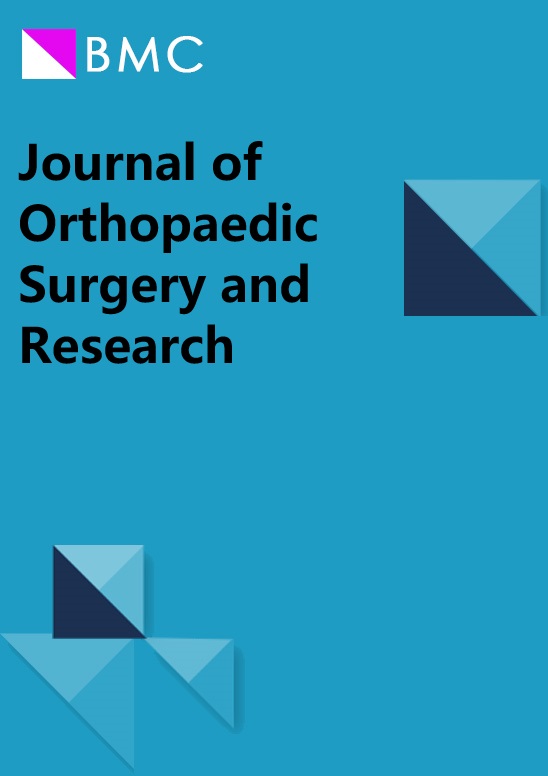Comparison of two surgical approaches in treating children with thoracolumbar junction tuberculosis: a multicenter study
IF 2.8
3区 医学
Q1 ORTHOPEDICS
引用次数: 0
Abstract
We conducted a multicenter retrospective analysis to compare the clinical outcomes and complications associated with the posterior-anterior and posterior-only approaches in treating Thoracolumbar Junction (TLJ) Tuberculosis (TB) in children aged 3–10 years. Herein, 52 TLJ TB patients (age range = 3–10 years; mean age = 6.8 ± 2.2 years; females = 22; males = 30) treated with debridement, fusion, and instrumentation were recruited from two hospitals in China between May 2008 and February 2022, and their clinical data were reviewed retrospectively. Among them, 24 group A patients and 28 group B patients underwent the posterior-anterior and posterior-only approaches, respectively. The two groups were assessed for surgical time, blood loss, hospitalization duration, operative complications, inflammatory indicators, Visual Analog Scale (VAS) scores, Oswestry Disability Index (ODI) scores, kyphosis angles, and neurologic functions. Results or differences with P < 0.05 were considered statistically significant. The average follow-up period was 37.5 ± 23.3 months. Compared to group A patients, group B patients exhibited significantly lower surgical time, blood loss amount, time it took to stand, and hospitalization duration, as well as fewer complications. Notably, the Erythrocyte Sedimentation Rate (ESR) and C-Reactive Protein (CRP) values of patients in both groups returned to normal one year post-surgery. Furthermore, compared to the preoperative values, patients’ VAS and ODI scores, as well as neurological functions and kyphosis angles, were significantly improved postoperatively and at the final follow-up, but with no statistically significant differences between the two groups. Moreover, there was no internal fixation failure or TB recurrence, and all patients exhibited solid bone fusion at the last follow-up. For pediatric TLJ TB involving no or at most two segments, both posterior-anterior and posterior-only approaches could effectively remove lesions and decompress the spinal cord, restore spinal stability, correct kyphosis, and prevent deformity deterioration. Nonetheless, the posterior-only approach can more effectively shorten the surgical time, reduce related trauma and complications, and promote rapid recovery, making it a safer and highly preferable minimally invasive approach.比较治疗胸腰交界处结核病儿童的两种手术方法:一项多中心研究
我们进行了一项多中心回顾性分析,比较后路-前路和单纯后路治疗 3-10 岁儿童胸腰交界处(TLJ)结核(TB)的临床疗效和相关并发症。本文选取了2008年5月至2022年2月期间在中国两家医院接受清创、融合和器械治疗的52例TLJ结核患者(年龄范围=3-10岁;平均年龄=6.8±2.2岁;女性=22例;男性=30例),并回顾性分析了他们的临床数据。其中,24 名 A 组患者和 28 名 B 组患者分别接受了后前路和纯后路手术。对两组患者的手术时间、失血量、住院时间、手术并发症、炎症指标、视觉模拟量表(VAS)评分、Oswestry残疾指数(ODI)评分、后凸角度和神经功能进行评估。P<0.05的结果或差异具有统计学意义。平均随访时间为 37.5 ± 23.3 个月。与 A 组患者相比,B 组患者的手术时间、失血量、站立时间和住院时间明显缩短,并发症也更少。值得注意的是,两组患者术后一年的红细胞沉降率(ESR)和C反应蛋白(CRP)值均恢复正常。此外,与术前相比,两组患者的 VAS 和 ODI 评分以及神经功能和脊柱侧弯角度在术后和最终随访时均有明显改善,但两组间差异无统计学意义。此外,没有出现内固定失败或结核复发的情况,所有患者在最后一次随访时均表现出坚实的骨融合。对于不涉及或最多涉及两个节段的小儿 TLJ 结核,后路-前路和单纯后路两种方法都能有效清除病灶,为脊髓减压,恢复脊柱稳定性,矫正脊柱后凸,防止畸形恶化。然而,单纯后路方法能更有效地缩短手术时间,减少相关创伤和并发症,促进快速康复,是一种更安全、更可取的微创方法。
本文章由计算机程序翻译,如有差异,请以英文原文为准。
求助全文
约1分钟内获得全文
求助全文
来源期刊

Journal of Orthopaedic Surgery and Research
ORTHOPEDICS-
CiteScore
4.10
自引率
7.70%
发文量
494
审稿时长
>12 weeks
期刊介绍:
Journal of Orthopaedic Surgery and Research is an open access journal that encompasses all aspects of clinical and basic research studies related to musculoskeletal issues.
Orthopaedic research is conducted at clinical and basic science levels. With the advancement of new technologies and the increasing expectation and demand from doctors and patients, we are witnessing an enormous growth in clinical orthopaedic research, particularly in the fields of traumatology, spinal surgery, joint replacement, sports medicine, musculoskeletal tumour management, hand microsurgery, foot and ankle surgery, paediatric orthopaedic, and orthopaedic rehabilitation. The involvement of basic science ranges from molecular, cellular, structural and functional perspectives to tissue engineering, gait analysis, automation and robotic surgery. Implant and biomaterial designs are new disciplines that complement clinical applications.
JOSR encourages the publication of multidisciplinary research with collaboration amongst clinicians and scientists from different disciplines, which will be the trend in the coming decades.
 求助内容:
求助内容: 应助结果提醒方式:
应助结果提醒方式:


